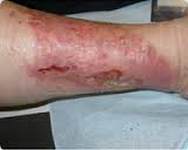
Most women first encounter varicose veins during pregnancy. However, varicose veins, except for the most severe cases, are in no way a contraindication for pregnancy. It should be borne in mind that varicose veins may partially or completely disappear after childbirth.
Since varicose veins are a chronic disease that progresses over the years, they should be treated as soon as possible, especially since they worsen with each subsequent pregnancy.
The cause of varicose veins is a violation of the function of venous valves and weakness of the venous walls, while the veins look dilated and tortuous. Varicose veins often appear during pregnancy, especially in women with a hereditary predisposition. Varicose veins during pregnancy usually develop on the legs, but varicose veins can also protrude on the external genitalia.
Many people think that varicose veins are often only a cosmetic defect, but this is not true.
This can cause swelling, a feeling of heaviness and pain in the legs, and sometimes lead to thrombophlebitis. Thrombophlebitis is one of the complications of varicose veins during pregnancy and in the postpartum period.
The risk of complications of varicose veins also increases with the duration of pregnancy. If you already have signs of varicose veins, or have a predisposition to it, consult a surgeon - phlebologist.
The following can contribute to the development of varicose veins:
- hereditary predisposition;
- rapid weight gain or excess weight;
- sedentary lifestyle;
- prolonged exposure to the sun;
- repeated pregnancies;
- hormonal changes during pregnancy;
- the growing uterus presses with its weight on the pelvic vessels, thereby preventing the backflow of blood from the pelvis and lower extremities;
In case of hereditary predisposition to varicose veins in pregnant women, preventive and therapeutic measures that are safe during pregnancy should be used.
The following measures can prevent or at least limit the manifestations of varicose veins:
- Avoid prolonged standing and sitting;
- Daily exercise;



- Follow a diet to limit weight gain, within acceptable limits, taking into account the duration of pregnancy.
- Raise your legs above heart level several times a day, for several minutes, to relieve the veins and eliminate congestion in them!




- When sitting for a long time, bend and straighten your feet at the ankles several times a day to improve the return of blood to the heart.
- Do not cross your legs when sitting

- Sit, leaning slightly forward and to the left, and go to sleep on your left side. Since the inferior vena cava is located to the right of the spine, you thus free it from the pressure of the uterus, and thereby improve the return of blood from the veins of the pelvis and lower extremities to the heart.
- Wear special compression tights for pregnant women to prevent the progression of varicose veins. They prevent swelling of the legs, improve blood return and thereby reduce the feeling of heaviness and pain in the legs, which leads to the prevention of the progression of varicose veins.
- Wear a prenatal bandage from the 24th week of pregnancy.
- Wear special support bandages for varicose veins of the labia and perineum.
- It is advisable to sleep on your left side

In case of varicose veins in pregnant women, it is recommended to wear special compression hosiery on the legs during childbirth and in the postpartum period.

All women are recommended to give birth in special compression stockings, regardless of whether they have varicose veins. If there are indications for treatment of varicose veins, it is better to start it after stopping breastfeeding.
- Thrombophlebitis

- Deep vein thrombosis
- Stagnation dermatitis

- Stagnation eczema

- Trophic changes


Be healthy!

